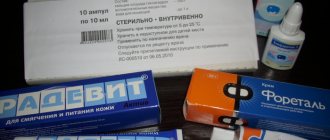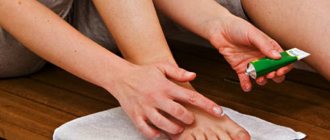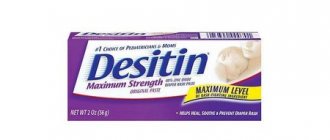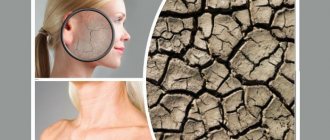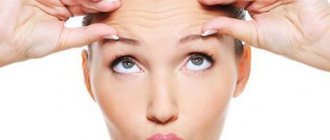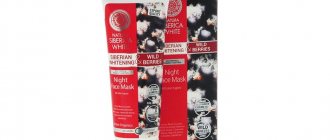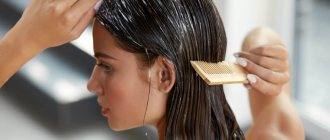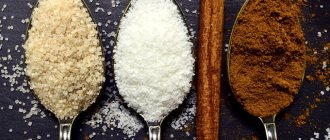The problem of acne is familiar to many people. To treat facial skin, a complex treatment is required, including dermatological agents, vitamin preparations, lotions, creams and cleansing. Among the latter, retinol is especially effective for acne.
The skin is constantly exposed to negative factors that adversely affect its condition. Germs, dust, sun, stress and unhealthy diet - all this is reflected in the skin of the face. Vitamin A is an essential micronutrient and the main assistant for maintaining the beauty of the skin.
For healthy skin
Retinol belongs to the group of fat-soluble vitamin compounds. It is often included in all kinds of cosmetic products. The micronutrient actively works on the surface and in the deep layers of the dermis, but does not apply to peeling agents, because it has a different effect on the skin:
- increases the rate of cellular renewal;
- reduces the stratum corneum;
- eliminates pigment spots;
- brightens skin color;
- regulates sebum production;
- stimulates the formation of elastin and collagen fibers;
- eliminates oily skin, tightens pores;
- reduces the manifestations of inflammation.
Life-flo, Advanced Recovery Cream with 1% Vitamin A, 1.7 oz (50 ml)
★★★★☆
1 228 ₽
Buy at a discount
With a lack of micronutrients in the body, dryness, peeling of the epidermis, and acne are observed. In order for it to always be normal, you should definitely include liver, fish, fruits and yellow or orange vegetables in your diet, for example, carrots, pumpkin. And for complete absorption in the gastrointestinal tract, it needs fats.
Since the substance is unstable and can quickly be destroyed in light, it is added to cosmetic products with vitamin A for acne in a modified form (palmitate/acetate, retinoic acid, etc.). These varieties are not easily destroyed.
Where is it kept?
Retinol itself is a true vitamin A, meaning it is a natural fat-soluble substance. It is necessary for the normal functioning of the body, including strengthening the immune system, bones, hair, nails, etc. You can get retinol from both plant and animal foods.
It is found in the following products:
- carrot;
- liver;
- fish fat;
- dairy products;
- apples;
- cherries;
- broccoli, etc.
Synthetic analogues of retinol, called retinoids, are commonly used in skin care. The most common and effective of them are retinoic acid, as well as esters: retinol acetate and retinol palmitate. Let's talk in more detail about the last two, since these are the ones that girls use most often.
Foods from which you can get natural vitamin A
These two substances are of different nature. Acetate is a salt of acetic acid, and palmitate is a salt of palmitic acid. It is believed that the second is more suitable for skin care, since palmitic acid is found in the human body, while acetic acid, in turn, is not. But in fact, retinol palmitate will work the same way as retinol acetate for acne, wrinkles and other problems. For the face, you can choose any of the options.
The anti-aging effect of vitamin A has been noticed by many manufacturers of cosmetics, so there are a large number of different finished products that contain retinol, for example:
- Vichy Liftactive Retinol cream;
- Retinol A cream 1%;
- Shiseido Benefiance eye mask;
- Holy Land Alpha/Beta&Retinol preparatory lotion, etc.
Vitamin A in the treatment of acne and pimple rashes
A valuable property that explains the effectiveness of using the vitamin for acne is control over the activity of the sebaceous glands and stimulation of elastin or collagen. Retinoids also help maintain the protective skin layer. In addition, the micronutrient accelerates regeneration processes and promotes the rapid replacement of keratinized structures by young cells.
In addition to its beneficial effects on the skin externally, the substance has a positive effect on the general condition of the body when taken orally. It is especially effective in the form of an oil solution and helps strengthen immune forces at the level of cellular processes. And regardless of the method of application. The product also improves the functioning of all internal organs.
Retinoids actively fight acne. Such medications are prepared in various dosage forms: in ampoules and solution, tablets or capsules for internal use, or in the form of ointment, lotion or cream. The substances are represented by a whole group of various forms of vitamin A for acne.
Pharmacy products are usually used in courses as a cosmetic or medicinal effect. They should only be prescribed by a doctor (dermatologist). 2nd-4th generation drugs deserve attention, as they are prescribed to eliminate serious pathologies and even oncological processes. Self-medication with them can be unsafe for health, fraught with exacerbations and adverse reactions.
Advanced Clinicals, Retinol Serum, 1.75 fl oz (52 ml)
★★★★☆
746 ₽
Buy at a discount
Properties
Retinol for the face is an antioxidant. It acts in two directions at once: it heals the surface of the skin and penetrates into its deeper layers, where it triggers enhanced collagen synthesis.
Read more:Vitamin E face mask
The substance has the following properties:
- exfoliates dead cells;
- evens out skin color;
- fights against wrinkles;
- increases tone;
- accelerates tissue regeneration;
- lightens pigmentation;
- helps strengthen blood vessels;
- helps get rid of acne: retinol cleanses pores of dead particles and dirt, and also reduces the activity of the sebaceous glands.
Generations of retinol products
Today, there are four generations, classified according to the principle of creation or discovery of these substances.
Table 1. Retinoids
| Generation | A drug | Purpose | Effect in the treatment of acne> |
| 1 | Retinol/A vitamin | Used in cosmetics to smooth out wrinkles. Has minimal irritating effect | Has a temporary positive effect |
| Retinol palmitate | One of the ether forms requires increased organic energy consumption to release active retinol. Mainly used in cosmetology | Effective only when taken in the morning and evening. Useless during daylight hours | |
| Retinol acetate | Used as an antioxidant additive for creams or ointments; not suitable for medicinal purposes due to low activity | It has a cosmetic effect against pimples, but the method of application and dosage must be determined by a doctor, otherwise side effects are possible | |
| Trans-retinoic acid (Tretinoin) | This type of retinoid is used as a component for dermatological medications. | Helps against acne, but should only be used as directed by a doctor | |
| Retinal/retinaldehyde | It is from this that retinoic acid is formed, which has a healing effect on the dermal layers. | Used against acne | |
| Alitretinoin | Systemic drug, produced in capsules, used primarily for the treatment of chronic eczema on the hands | Effective in the fight against pimples and acne, prescribed by a doctor | |
| Isotretinoin | Synthetic form, effectively used in cosmetology and dermatology | Has a pronounced anti-acne effect. It has a milder effect than previous products and does not cause side irritation, nor does it increase sensitivity to ultraviolet radiation. | |
| 2 | Etretinate | Synthetic derivative of retinoic acid. Used to eliminate serious dermatological pathologies: ichthyosis, Darya, lupus, psoriasis | Works well in treating acne |
| Acitretin | A systemic agent with a teratogenic effect. Used against dermatoses or psoriasis | Treats acne, but dosage must be observed | |
| 3 | Adapalene | Naphthoic acid derivative. Stabilizes sebum secretions, causes regression of pustules and comedones | Effective in the treatment of acne even when other substances were powerless |
| Tazarotene | Used to eliminate dermatological and oncological pathologies, in the treatment of age-related wrinkles | It is used against acne in the form of an ointment or gel. Has high potency comparable to glucocorticosteroids | |
| Bexarotene | A potent drug used in the treatment of complex and dangerous oncological pathologies | Used for acne, but dangerous for pregnant women. It is not prescribed for simple acne due to its potent antitumor activity, but is recommended for complex inflammatory dermatological lesions. | |
| 4 | Seletinoid G | The newest synthetic form of retinoids without an allergic reaction. Used to restore skin | Ineffective for acne |
| Topical triforotene | Retinoid with powerful selective activity, used for many dermatological pathologies | Recommended for treating large areas affected by inflammation of the sebaceous glands |
The most effective types of vitamin A for acne are the latest generations, but they can only be used as prescribed by a doctor, since they are potent medications. There are also cosmetic products of the Libriderm Aevit brand, which are not related to medicinal drugs of the retinoid group and are ineffective in the treatment of acne.
Indications for use
The instructions for use indicate in what cases it is necessary to use retinol palmitate.
Pathologies of the visual analyzer
It is recommended to take medications both for the treatment of diseases caused by a lack of vitamin A, and for the complex treatment of diseases:
- dryness of the mucous membranes of the eyes;
- decreased vision at night;
- inflammation of the conjunctiva of the eye;
- dystrophic changes in the retina;
- progressive cataract;
- intense visual stress, wearing contact lenses, long periods of time at the computer;
- harmful effects of the environment - solar radiation, staying in a smoky room, under air conditioning.
Skin diseases
Vitamin A in the form of retinol palmitate is indicated for dryness, irritation, and lesions of the following nature:
- thermal effects on the skin;
- for ichthyosiform erythroderma - diseases in which large scales form in skin folds, hair, nails are characterized by accelerated growth;
- neurodermatitis - skin damage caused by allergic causes;
- keratoses - pathologies in which thickening of the epidermis occurs;
- psoriasis – scaly lichen, characterized by the formation of red spots that rise above the surface of the skin;
- acne, pimples on the face;
- excessive hair loss, baldness.
Pathological conditions of internal organs
The instructions stipulate the following cases when it is indicated to take supplements orally:
- ulcerative lesions of the gastrointestinal tract;
- infectious and colds of the upper respiratory tract.
First generation retinoids
First generation vitamin A acne substances include: acetate, palmitate, tretinoin and isotretinoin.
Retinol forms: acetate and palmitate
Palmitate is used internally, protects the skin, accelerates its regeneration and promotes rapid recovery. First generation drugs of this group have contraindications - hypervitaminosis or hypersensitivity to the substance. It is not recommended to take such drugs in the early gestational stages.
Table 2. Products based on retinol palmitate and acetate
| A drug | Manufacturer (RF) | Release form | price, rub. | |
| Retinol palmitate | Retinoids | Solution 100 mIU/ml, 10 and 50 ml, for internal use | From 114/280 | |
| We see | Ointment (0.5%) | From 102 | ||
| Radevit asset | From 339 | |||
| Retinol acetate | Marbiopharm | Oil solution 3.44%, 50 ml | From 85 | |
| Aevit | Altaivitamins | Palmitate capsules | 30 | From 104 |
| Meligen | 10/20 | From 29/45 | ||
| Marbiopharm | 20 | From 66 | ||
It is recommended to take medications in the evening or in the morning, when skin proliferation is more active. During use, the development of adverse reactions is likely:
- increased itching sensations;
- allergy;
- swelling or redness of the skin.
Unlike palmitate, acetate can be used both externally and internally. This drug relieves skin from dryness, moisturizes, and improves blood circulation in the dermal layer. But only a qualified dermatologist can select the dosage and course of therapy.
Judging by its effectiveness, retinol acetate for acne is as effective as palmitate. The products are produced in the form of oil solutions, in capsule form or ointment.
Tretinoin
It is effective in the treatment of inflammatory lesions of the sebaceous glands, but the dosage and regimen of use should be selected individually by a dermatologist. Medicines based on it are produced in the form of gels or creams for external use. They are prescribed for the treatment of acne or acne, hyperpigmentation of the skin, etc. They are effective for degeneration of the dermis, and are sometimes prescribed as an adjuvant for the treatment of traumatic lesions of the epidermis - burns, etc. Also, medications based on tretinoin are prescribed for keratoses, pustules, comedones or flat warts .
The skin is pre-cleaned and dried. The drug is then applied to the lesions. This should be done in the evening once a day, half an hour before bedtime. After application, you should wash your hands with soap.
Table 3. Tretinoin-based products.
| A drug | Manufacturer | Release form | price, rub. |
| Tretinoin USP, Retin-A | India | Cream 0.5% | From 450 |
| Erythretin (Lokacid) Tretinoin+Erythromycin | Chemineau, France | Gel, 30 g | From 990 |
These drugs are contraindicated in pregnant and lactating women, children under 12 years of age, with acute inflammatory lesions of the dermis, as well as with photosensitivity and hypersensitivity to the components. During use, adverse reactions may develop: peeling and dry skin, cheilosis, rashes or local allergies, hypersweating, hair loss, etc.
Isotretinoin
Refers to the most effective substances of the first generation. Medicines based on 13-cis-retinoic acid are produced in tablets or ointments, in capsulated form. These drugs are prescribed for the treatment of acne, seborrhea, rosacea and other dermatological pathologies. Capsules are taken orally, 1 piece. 1-2 times a day with food or according to a regimen developed by a doctor. Ointment forms are applied to cleansed skin in the morning and at night. The course of therapy is 1-1.5 months.
Table 4. Products containing isotretinoin.
| A drug | Manufacturer | Release form | price, rub. | |||
| Roaccutane | Hoffmann-la-roche, Germany | Tablets 10/20 mg | 30 pcs. | From 1640/3170 | ||
| Aknekutan | Jadran, Croatia | Capsules | 8/16 mg | From 1099/2111 | ||
| Will erase | Ranbaxy, India | 10/20 mg | From 1160/2055 | |||
| Verocutan | Veropharm | Russia | From 650/1020 | |||
| Retinoic ointment | Retinoids | Ointment for external use 0.05% and 0.1% 15 g each | From 270 and 310 | |||
| Retasol | Solution 0.025% 50 ml | From 340 | ||||
Possible side effects include dermatological reactions, redness and swelling of the skin, hypersweating, cephalalgia and dizziness. Nausea and anemia, muscle pain, etc. are also likely to occur.
Contraindications:
- pregnancy, conception planning;
- HB and hypersensitivity;
- use in combination with tetracycline antibiotics;
- renal and hepatic pathologies, hypervitaminosis, the presence of neoplasms.
Second generation products
The most affordable acne retinol of this generation is acitretin. Pharmaceutical manufacturers include this substance in medications intended for systemic use in the treatment of dermatoses and psoriasis, and severe cases of acne.
Medicines based on acitretin are produced in the form of capsules. Studies have shown that they do not cause muta- or carcinogenic changes, but have a high degree of teratogenicity. The drugs effectively cope with acne of complex forms, are used for lichen and psoriasis, ichthyosis and other severe dermatological pathologies.
Table 5. Second generation retinoids.
| Substance | A drug | Manufacturer | Release form | Price |
| Acitretin | Neotigazon | Patheon Inc., Canada | Capsules 10 and 25 mg | From 1550 |
It is recommended to take the drug once a day with food and milk. Prescribed 1 capsule 25 mg 1/24 hours, or (10 mg) three times a day. The course lasts 2-4 weeks.
Contraindications:
- breastfeeding and pregnancy;
- chronic hyperlipidemia;
- severe forms of renal and hepatic failure;
- hypersensitivity.
Side effects are observed in many patients, but after dose adjustment the condition normalizes. Hypervitaminosis A, dry mouth, thirst and allergies may occur. The use of neotigazon in the treatment of acne is advisable only in cases where other methods have proven ineffective.
Third generation products
The most common substances from the third generation are adapalene and tazarotene. Based on them, a lot of vitamin A medications are produced for external use in the form of creams or gels. They are also used in oncology therapy.
Table 6. Third generation vitamin A preparations
| Substance | A drug | Manufacturer | Release form | Price | ||
| Adapalene | Differin | Galderma Lab., France | Cream 0.1% | 30 g | From 900 | |
| Klenzit | Glenmark | India | From 640 | |||
| Klenzit-S | From 780 | |||||
| Adaklin | Ranbaxy | 15 g | From 500 | |||
| Adolen | Sintez, Russia | From 240 | ||||
| Tazarotene | Zorak | Pierre Fabre Dermatologie, France | From 2800 | |||
| Tazorac | Allergan | Cream 0.05% | 30 g | From 1200 | ||
| Tazret | Glenmark, India | Gel 0.05% | 20 g | From 1800 | ||
The drugs are applied once a day at night to the affected skin. After 30-60 days of treatment, the effect is achieved; after 3, improvement occurs.
Contraindications:
- hypersensitivity;
- GW and pregnancy;
- children under 12 years of age;
- Rosacea.
The drug is prescribed with caution for eczema or dermatitis.
During use, it is possible that adverse reactions may occur, such as itching, hyperemia, burning, rashes, erythema, and dry dermis.
After use, you should use sunscreen before going outside.
Fourth generation products
Fourth generation vitamin A preparations include Topical triforotene. One of the latest trials showed that the retinoid has a powerful selective effect against the retinoic receptor. This form makes the medications safe compared to selective varieties. The components of triforotene are quickly eliminated in the bloodstream and are useful for patients with extensive acne lesions.
There are no drugs based on this substance yet, but it is expected that in the near future they will be able to successfully treat many pathologies.
Contraindications for use
Despite the fact that retinoids are a group of vitamin A, preparations based on them have contraindications. These include:
- hypersensitivity of the skin;
- renal or hepatic pathologies;
- lactation or childbearing;
- age up to 12 years.
Such forms are especially dangerous for pregnant or lactating women, since these drugs can cause fetal defects and negatively affect the development and growth of the baby.
Yeouth, Retinol 2.5% Serum, 1 fl oz (30 ml)
★★★★★
1 488 ₽
Buy at a discount
Instructions for use
When using vitamin A for acne, you must follow the instructions. Typically, these drugs are prescribed to patients in conjunction with antibiotic therapy. They are recommended to be used only for moderate to severe rashes. You should not smear on acne or drink capsules if single rashes appear.
These drugs also have side effects that negatively affect the liver. Therefore, they should be taken according to the instructions (2-3 months with a break). The use of topical forms of retinoids (external) is similar. Locals are safer.
During treatment, the production of sebum is reduced, inflammation is suppressed, the condition of the follicles is normalized, and the skin is evened out. Most often, Retinoic ointment or Roaccutane is prescribed for acne.
Reviews about the advantages and disadvantages
| Leave your review | |
| 1 2 3 4 5 | |
| Send Cancel | |
Send your review
Retinol palmitate
Average rating: Number of reviews: 0
Reviews of supplements with retinol palmitate are positive. They note affordable prices and easy portability. Most reviews about the high effectiveness of use in cosmetology. Among the disadvantages, a local inflammatory reaction is noted, which disappears after a few days.
Side effects
Medicines with various components of vitamin A are effective in the treatment of psoriasis, pimples, acne, and also prevent aging. But these drugs can also provoke adverse reactions:
- peeling and dryness of the skin;
- blisters and tissue swelling;
- hyperthermia and shortness of breath;
- hypersensitivity to UV radiation;
- burning and itching;
- nausea and vomiting;
- hypertension;
- arrhythmia, dizziness, weakness and chest pain.
When using retinol to treat acne in young people, the likelihood of allergic reactions increases.
Homemade masks with retinol
To make masks, liquid forms of oil solutions are used. Before use, you must test for allergies, apply the mixture to your wrist and wait 30 minutes. In the absence of a negative reaction, the composition can be applied to the face.
For masks to be useful, you need to follow several rules:
- apply the composition only to steamed and clean skin;
- add vitamin components to the mixture;
- Carry out the procedure 2 hours before bedtime;
- avoid the eyelid area;
- keep the mask for no more than half an hour, rinse with herbal decoction or warm water.
For the treatment to be effective, the procedures must be carried out in courses - 10 sessions no more than twice a week, then take a break for 2-3 months.
There are many recipes for homemade masks. Each of the mixtures has a specific, targeted effect.
- Mask against acne and to prevent their formation. Mix 1 g of zinc ointment, ground lentils (10-15 g) and two ampoules of vitamin A. Apply the resulting mass to cleansed skin in a thin layer and leave until dry. Make masks twice a week, for prevention - 2 times a month.
- Aloe with vitamin A (for hydration). Take any cream, add solutions A and E one capsule at a time and a spoonful of aloe juice. Mix the ingredients and apply to the face for half an hour.
- Mask that tightens pores. Mix one egg with cottage cheese and vitamin A. Apply to skin and leave for 30 minutes.
- Mask for oily and inflamed skin. Mix an ampoule of vitamin A with 2-3 drops of tangerine oil. Steam 12 g of oat bran and 14 g of yellow clay with warm green tea. When the mixture has cooled, add the oil and vitamin to the mixture. Apply the resulting composition to a steamed face for a quarter of an hour. The frequency of procedures is 3 sessions per month.
- Mask for dry and inflamed skin. Grind the cucumber until mushy, add 7 ml of carrot juice and one ampoule of vitamin A. Apply to a pre-steamed face for 20 minutes.
- Nourishing mask. Mix coconut milk with almond oil (one spoon at a time), add vitamins E and A, and a little honey. Apply for 15-20 minutes.
- Cleansing mask with retinol and algae. Dilute the kelp with warm water and add an ampoule of vitamin A to the composition, you should get a paste. Apply the mass to the face for 20-30 minutes twice a week.
For masks to have an effect, the frequency of procedures and the number of sessions must be observed.
Reviews
Veronica: “Having heard a lot from my friends about the incredible effect of vitamin A on the skin, I ran to look for a cream with retinol for the face. Instead, the pharmacy advised me to buy Retinol palmitate (oil solution). Problems that existed at that time: oily skin, enlarged pores, blackheads. I began to use the solution not on the entire face, but only on problem areas, that is, on the T-zone. I apply it at night, since the product is quite greasy, it takes a long time to absorb, and you can’t apply makeup on top. I immediately noticed that my face became less shiny, and the number of blackheads decreased dramatically. After a month, even the complexion became more even, and the wrinkle between the eyebrows smoothed out a little.”
Elena: “My best acne remedy is retinol acetate. I take the one in capsules for myself, I’ll explain the reason: I apply the vitamin precisely only to inflammation, and for these purposes just one tablet a day is enough for me. I simply squeeze its contents into my palm and immediately distribute it over the skin. Pimples heal much faster and, very importantly, don’t leave any marks behind.”
Lyubov: “I first tried retinol as part of an eye cream from the professional brand Christina. The product smoothes out wrinkles incredibly quickly and effectively! It must be used strictly according to the instructions, introducing it into care gradually. The skin will peel off at first, because retinol completely renews it, and underneath it will appear new – fresh and smooth. The best cream, thanks to vitamin A for that!”
Correct use of retinol allows you to effectively renew the epidermis. Along with dead cells, many problems go away: wrinkles, pimples, blackheads, pigment spots. Vitamin A has a high anti-aging ability, which makes it especially valuable in the care of aging, aging skin.
